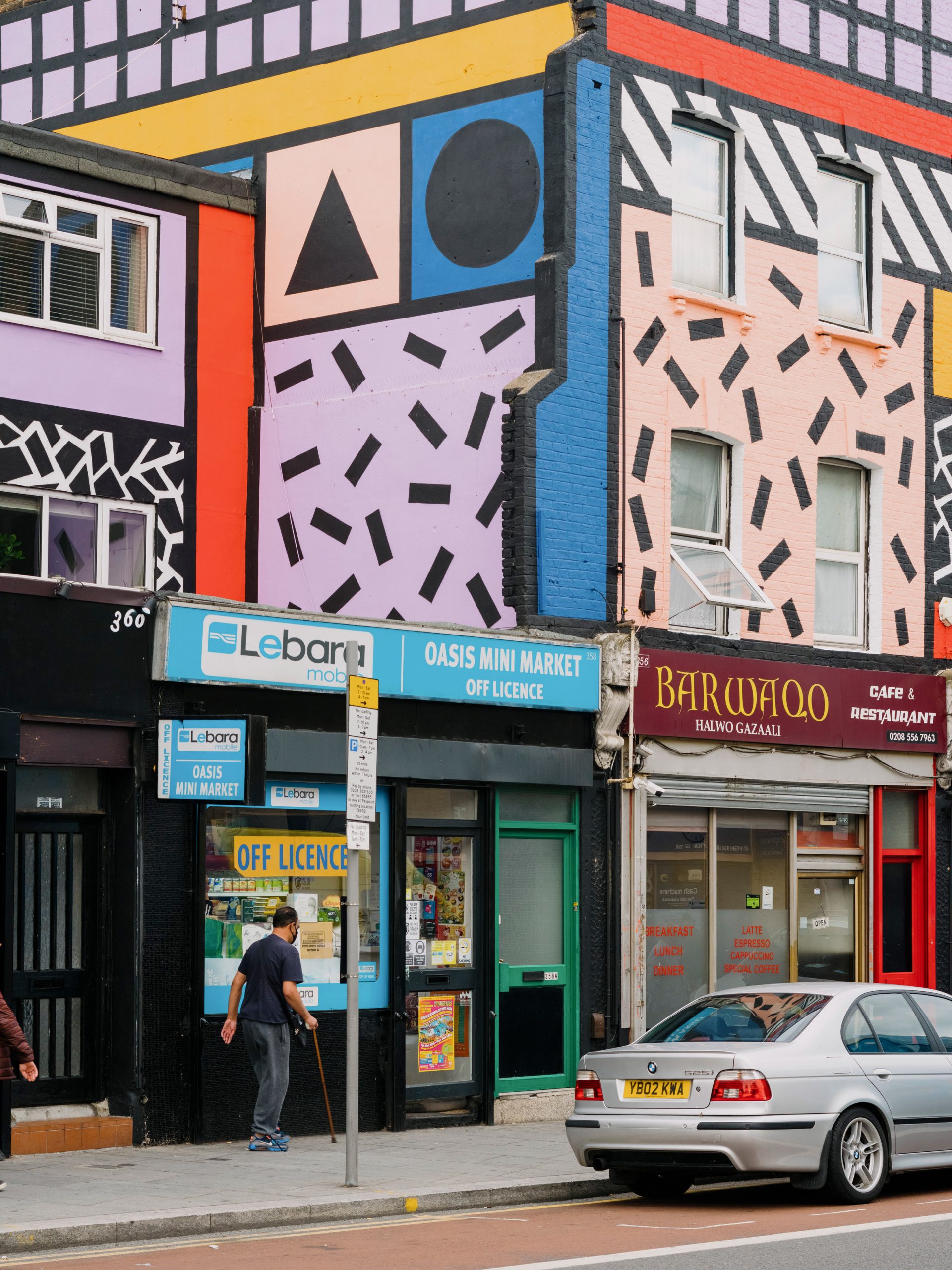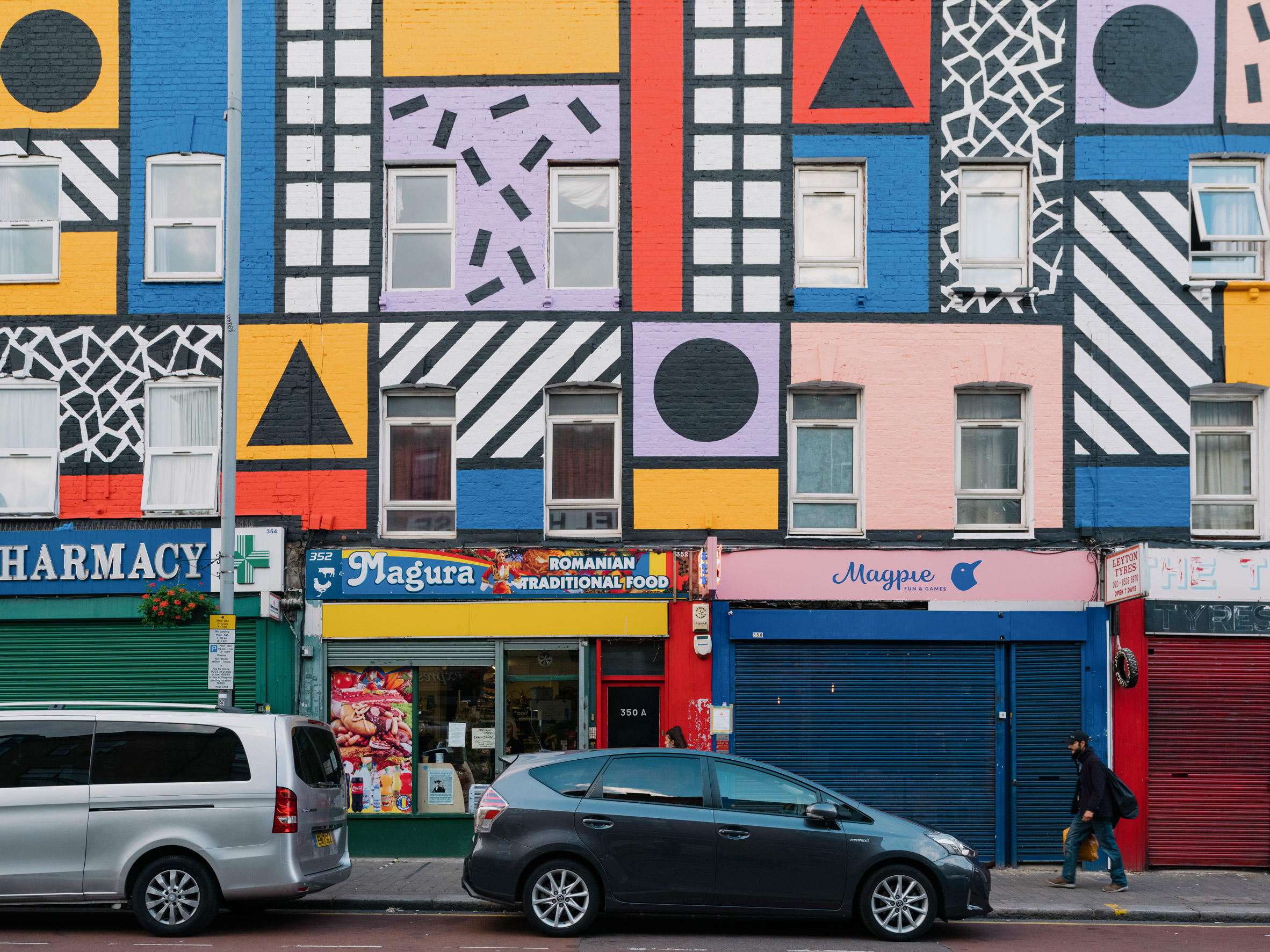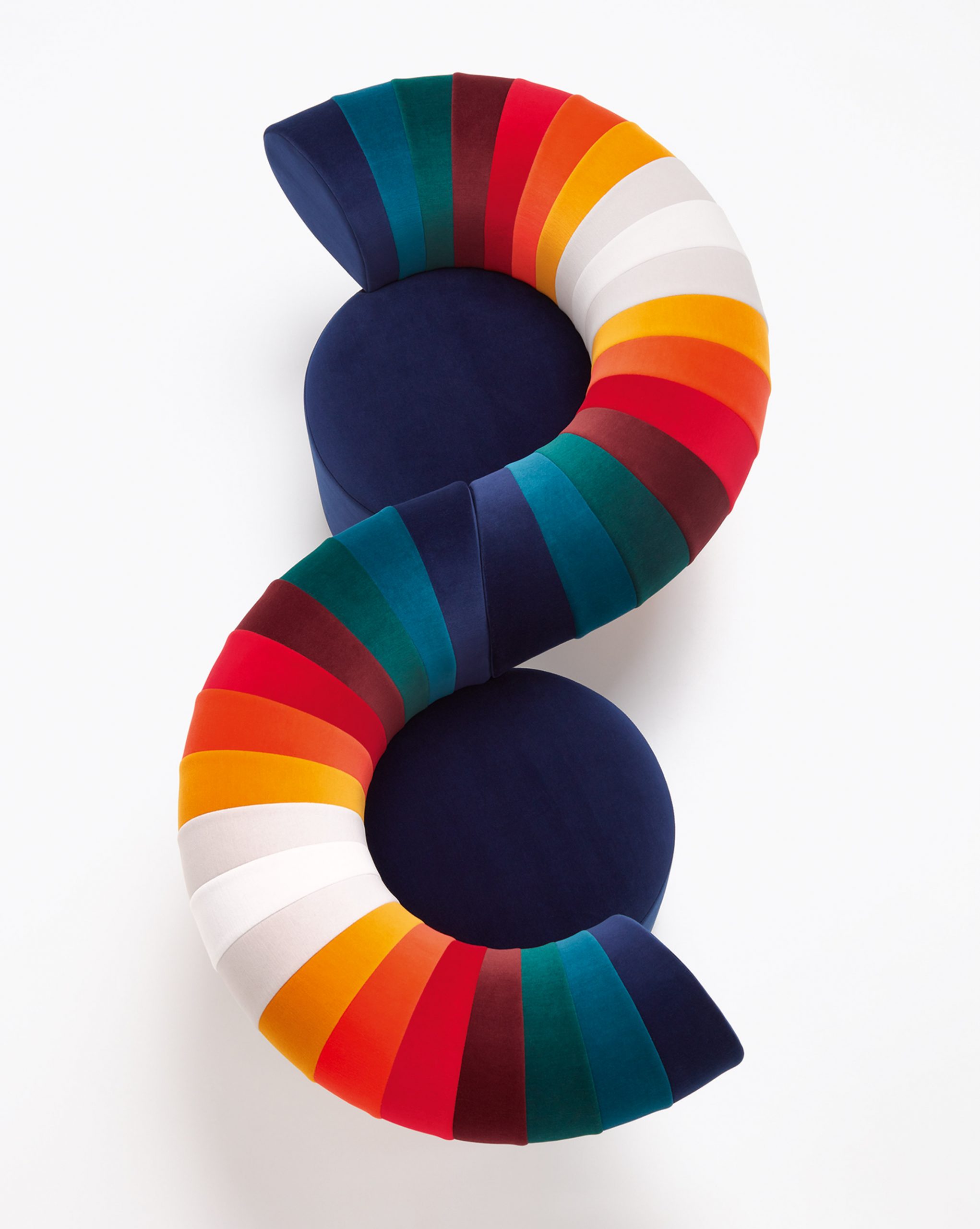
Influenced by 80s Japanese ACG subculture, the Taiwanese illustrator talks us through her visually explosive works.
from It's Nice That https://ift.tt/3bm2ino

Influenced by 80s Japanese ACG subculture, the Taiwanese illustrator talks us through her visually explosive works.

Residents of London's Leyton neighbourhood have crowdfunded the overhaul of an entire block on their local high street, recruiting designer Camille Walala to decorate it with a large-scale mural in her colourful, signature style.
Called Walala Parade, the piece stretches across the facade of eight different buildings, reportedly making it one of London's largest public artworks.
The final design was voted on by the local community and paid for using £40,000 raised as part of an appeal by east London street art collective Wood Street Walls.

London mayor Sadiq Khan contributed an additional £25,000 towards the project as part of his Crowdfund London programme, which is helping to finance creative, community-led projects across the city in collaboration with civic crowdfunding platform Spacehive.
"We're particularly excited to see Walala Parade come to life at a time when the high street has been hit hard by the pandemic," said Spacehive founder Chris Gourlay.
"Ideas like this don't just lift our spirits – they help places to build back better."

Leyton, which is based in the borough of Waltham Forest in the northeast of London, is home to a large and diverse immigrant population alongside young creatives, who come to the area for the affordable studio and workspaces that have been created in its abandoned warehouses.
Through the use of her vibrant, graphic visual language, Walala aims to give expression to this particular identity.

"Waltham Forest is such an exciting and creative area of east London – now it's going to look the part, too," said the designer.
"Art and colour have an amazing power to spread positivity, especially at the scale of the street. It's wonderful to have an opportunity to have such a significant impact on the look and feel of an entire neighbourhood."

Wood Street Walls commissioned and realised the design, sourcing paint from the surrounding area in a bid to support local businesses.
A portion of the paint was also supplied by the Forest Recycling Project, which saves unused pots from going to landfill by selling them to community organisations, charities and artists at a discounted price.

The project's fundraiser was backed by a number of local businesses, including the animation studio Mighty Elk and Deeney's cafe, in the hope of reinvigorating the previously neglected high street.
"We believe art and culture is a great way to engage the community and brighten up public space, instil a sense of civic pride and also attract more people to the area and increase footfall," said Deeney's co-founder Patrick Dwyer.
"As we emerge out of lockdown, this is more important than ever."

Another recent project in the capital has seen Walala give a colourful makeover to two pedestrian crossings and a building facade in the district of White City.
The designer's work forms part of a wider movement termed the New London Fabulous. The term, coined by Adam Nathaniel Furman in an interview with Dezeen, refers to a group of designers including himself and Walala, who are consciously using colour and pattern to spread joy.
Photography is by Tim Crocker unless otherwise stated.
The post Camille Walala revives east London high street with community-funded artwork appeared first on Dezeen.

It’s never the wrong time to make impactful positive changes to your creative methods of working, and here are a few ways to start.

The shortlists for Dezeen Awards 2020 will be announced next week – and Dezeen readers will then able to vote for their favourite entries in our inaugural public vote.
Our jury of 75 industry-leading professionals including Norman Foster, Paola Antonelli, Jaime Hayon and Michelle Ogundehin has now completed the shortlisting process for this year's awards, narrowing down the longlisted entries to around five entries per category.
All shortlists will be announced on Dezeen next week with the inaugural public vote opening on 14 September.
The public vote will allow readers to choose one entry per category until voting closes on 12 October.
Projects and studios with the highest number of votes in their category will win a special Dezeen Awards 2020 public vote winners' certificate.
Note that the public vote is separate from the main Dezeen Awards programme, where winners are selected by a jury of industry professionals.
Here's a guide to what's happening next:
7-10 September: shortlists published
The shortlisting process has now been finalised by our panel of 75 judges. The shortlists will be published on Dezeen, on our social media channels and in newsletters.
Each shortlisted entry will receive its own page on the Dezeen Awards website and will be published in full on Dezeen.
Architecture shortlist: 7 September
Interiors shortlist: 8 September
Design shortlist: 9 September
Studio shortlist: 10 September
14 September: public vote goes live!
You can start voting for your favourite projects on 14 September. You’ll be able to vote via the public vote landing page or via a link on the shortlist page of the project you want to vote for.
12 October: public vote closes
Readers have until 12 October to vote for their favourite projects.
19 October: All public vote winners announced
Winners will be decided in each category based on the highest number of votes. We will be announcing all public vote winners on Dezeen on 19 October.
Late October
Dezeen Awards winners will be ratified by our master jury, and winners will be announced at the end of October. We’ll be sharing more information about this soon.
Subscribe to our newsletter
To receive updates and news about Dezeen Awards, please subscribe to our newsletter.
The post Vote for your favourite Dezeen Awards 2020 entries in our first ever public vote appeared first on Dezeen.

Kvadrat's Knit! exhibition, which forms part of 3 Days of Design, sees 28 designers create a variety of objects upholstered in its Febrik textile range, from sofas and dining tables to a giant squishy ball and whimsical flight suits.
Debuting in Copenhagen during 3 Days of Design as both a physical and digital show, the Knit! project aims to explore the potential of the knitted textiles in Kvadrat's Febrik collection.
Curators Anniina Koivu, Jeffrey Bernett, Johanna Agerman Ross, Njusja de Gier and Renee Merckx selected 28 designers to take part who have demonstrated "curiosity in experimenting with materials, form and colour".
This includes London-based designer Yinka Ilori, Dutch design firm Studio Truly Truly and Swedish design collective Malmö Upcycling Service.

Ilori's creation is a seating system called A Trifle of Colour, which looks at the chair as a "social tool". Made from multiple-layered sheets of ply-board that are individually upholstered in Kvadrat Febrik's Sprinkles textile, the chair-bench hybrid features removable and adjustable backrests.
Other designers who opted for seating design include Ana Kraš, who created the Ofset Chair from six quadrilateral planes, and Ania Jaworska, who designed structured chairs intercepted with geometric cushions.

Some creatives, such as Australian designer Adam Goodrum and New York-based practice Visibility, made circular seating systems.
While Goodrum's interlocking sofas take cues from Victorian love seats, Visibility created a circular seating structure positioned around a central table based on traditional Middle Eastern dining.

Other figures went for more unconventional designs, including Lebanese designer Paola Sakr, who made a series of tableware from textile moulds, and Venice-based design practice Zaven, which used the textiles to create a series of utopian "flight suits".
Zaven's suit designs are informed by the image of a squirrel jumping from trees, an airplane flying through the sky and an astronaut floating in space.

Various designers used the Febrik textiles to make fashion garments. Ayzit Bostan, for example, used the fabric to make long dresses, cropped hoodies, kimono coats and layered skirts.
Copenhagen-based Marie Sloth Rousing, on the other hand, created conceptual garments that combine the elements of both a chair cover and a shirt, and can be worn by both objects and people.

New York- and Thessaloniki-based studio Objects of Common Interest designed a series of fabric-clad fluted columns, which are informed by industrial circular knitting machines.
Each pillar is comprised of stacked textile sections that start to spin independently at varying speeds in different directions when approached by viewers.

A giant, squishy ball by Swiss industrial designer Michel Charlot was also created as part of the show, as well as a room divider by Malmö Upcycling Service (MUS) and a reclined seat by Studio Truly Truly that features a bulbous cushion supported by a clear glass base.
Fabric surrealism-inspired characters by Benja Harney also feature in the exhibition, alongside a series of blankets by Studio Bertjan Pot that have been hemmed using coloured duct tape and a padded bag strap by Giulia Chéhab.
Other participating designers and studios include Studio Akane Moriyama, Bahraini Danish, Camille Blatrix, The Fabrick Lab, Faysal Tabarrah, Studio Fonta Fonta, Julie Richoz, Kumano, Lim + Lu, Studio Maria Blaisse, Studio Paperform, Raw Color and Shigeki Fujishiro Design.

The Copenhagen festival, 3 Days of Design, is taking place in the Danish capital from 3 to 5 September 2020. The event was initially due to take place in March this year, but was postponed as a result of the coronavirus pandemic.
Kvadrat recently enlisted fashion designer Raf Simons to create two upholstery fabrics, called Helia and Silas, that boast unusual textures from natural materials including linen, wool and viscose.
The post Designers make furniture and fashion products from textiles for Kvadrat's Knit! exhibition appeared first on Dezeen.